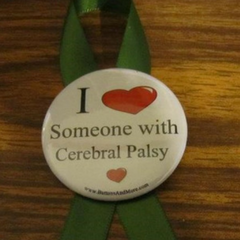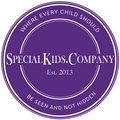
Go Green for National Cerebral Palsy Awareness Day!
National Cerebral Palsy Awareness Day is on March 25th and shouldn’t be confused with World Cerebral Palsy Day which is on October 6th. Giving each country the opportunity to celebrate Cerebral Palsy twice a year is a great idea, particularly as it is the most common of all childhood disabilities.
The colour for National Cerebral Palsy Awareness day is green. This works well for the month of March as St. Patricks day – another green day – is also celebrated during that month too. There is no set theme to this disability awareness day. Instead, simply doing anything you can to raise awareness of the condition, its causes, symptoms and giving support to those who suffer from it, is enough.

What is Cerebral Palsy?
Cerebral Palsy is a disability that over 17 million people worldwide, suffer from. In the past, it was commonly thought that difficulties and trauma during birth was the biggest cause of cerebral palsy. But now, it is accepted that some 80% of cases are due to brain damage that occurs during development in pregnancy.
There are four main types of cerebral palsy:
- Spastic cerebral palsy – some of the muscles in the body are tight, stiff and weak, making it difficult to effectively control movement.
- Athetoid (dyskinetic) cerebral palsy – muscle control is disrupted by spontaneous and unrequested movements. Posture control is also disrupted.
- Ataxic cerebral palsy – problems include difficulty with balance, shaky movements of hands or feet, and difficulty with speech.
- Mixed cerebral palsy – any combination of two or more of the above.
Despite there being four basic types of the condition, it’s rare that two sufferers experience the exact same combination of problems. One example is speech problems. While speech can be affected in large proportion of cerebral palsy sufferers, those problems can vary greatly; some can’t speak, some struggle to speak, some talk too much, to name but a few possibilities.
In many cases, cerebral palsy can take time to be diagnosed, as the symptoms aren’t always apparent until children begin to develop their fine motor skills. Other problems associated with the cerebral palsy include:
- Difficulty with walking, writing, eating, talking, dressing.
- Problems with balance and coordination.
- Difficulty controlling and maintaining posture.
- Visual difficulties.
- Hearing problems.
In addition to these difficulties, epilepsy and learning difficulties often occur in those suffering from the condition.
How to Celebrate National Cerebral Palsy Day
As we’ve already said, wearing green is one way to help celebrate the day and raise awareness. And, as with other disabilities spreading information and understanding of the condition is often the best place to start.
If you do want to fundraise to support a charity or help further research into cerebral palsy, then there are plenty of options. You could arrange sponsored activity or, as it’s the beginning of the running competition season, you could take part in an event and donate any sponsorship to the charity of your choice.
Or, if you or a loved one suffer from cerebral palsy, how about trying to discover a new sport or activity they would enjoy and you can help with? The NHS change 4 life campaign has a number of good ideas of how to get started at home with a new sport for your disabled child or family member. Sporting activities to learn at home include: potato gold, creating and competing obstacle courses and water balloon relay races.

There are many inspirational sports men and women who have cerebral palsy. Swimmer Sascha Kindred is one. He’s now retired but only after winning 13 Paralympic medals, 19 World Championship medals, 26 European championship medals and holds 12 British records. Why not teach your children about him and inspire the next Paralympic champion?
If you would like to find out more about Cerebral Palsy or National Cerebral Palsy Awareness Day, then please take a look at the links below.
http://www.nhs.uk/conditions/Cerebral-palsy/Pages/Introduction.aspx
https://www.scope.org.uk/support/families/diagnosis/cerebral-palsy
http://www.cerebralpalsy.org.uk/
http://www.cplondon.org.uk/support-us/community-events/cerebral-palsy-awareness-week/
https://www.facebook.com/MarchIsCerebralPalsyAwarenessMonth/
https://themighty.com/2016/03/facts-for-each-of-the-31-days-of-cerebral-palsy-awareness-month/
Sources:
17 million people
http://yourcpf.org/statistics/
Four main types
http://www.cplondon.org.uk/about-us/cerebral-palsy/
Change 4 life campaign
http://www.nhs.uk/change4life/Pages/disability-activities-kids.aspx
Sascha Kindred
http://www.cpsport.org/news/latest-news/sasha-kindred-cbe-retires-from-swimming/

